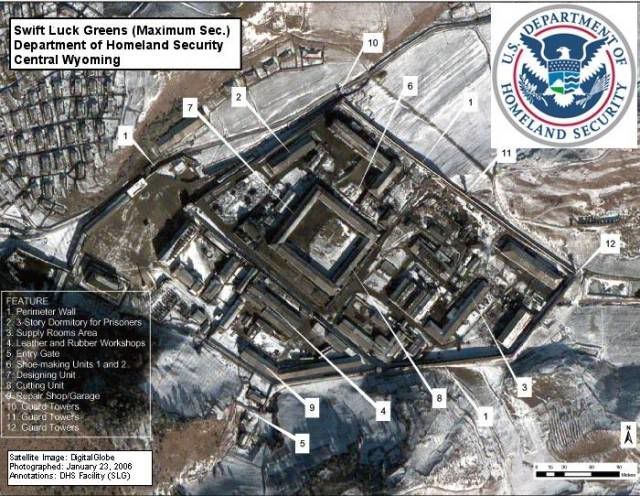|
By Suhwan (Alma) Seo, HRNK Intern November 2015 The Committee for Human Rights in North Korea (HRNK) was the first organization to combine satellite imagery and escapee testimony to report on North Korea’s vast system of unlawful imprisonment, in the first Hidden Gulag report by David Hawk, published in 2003. HRNK has continued to use satellite imagery in its investigation and monitoring of North Korea’s political prison camps, most recently through a partnership with Colorado-based satellite imagery company AllSource Analysis (ASA). Now it appears that HRNK’s satellite imagery-based reporting has become so well-known that it is being used by conspiracy theorists keen on concocting bizarre stories. It seems that satellite images from HRNK’s Hidden Gulag reports were used as “evidence” to “prove” that the Federal Emergency Management Agency (FEMA) has been secretly building… concentration camps in America (!). Southern Poverty Law Center (SPLC) published an article stating that James Meigs, then editor-in-chief of Popular Mechanics, noticed the images used by conspiracy theorists were actual images of forced-labor and political prison camps in North Korea.[1] The article reports that “the images, according to Popular Mechanics, were taken from a Washington D.C.-based human rights group’s report exposing North Korea’s hidden prison camps.”[2] The image is on page 118 of The Hidden Gulag. The image has absolutely nothing to do with the imaginary “FEMA camps.” It is actually an image of Kyo-hwa-so (Political Prison Camp) No.1 in Kaechon. Conspiracy theorists further claimed that “there is a minimum of one confirmed concentration camp built on American soil in rural Wyoming.” They stated that such pictures were “accidentally released by the Department of Homeland security.” The fact is that these images were simply taken from The Hidden Gulag: Exposing North Korea’s Prison Camps. Though the images were slightly altered, they were initially published by the US Committee for Human Rights in North Korea to raise awareness of North Korea’s gulags.[3] An estimated 400,000 people have died in North Korea’s political prison camp system since its establishment in the 1950s. Currently, there are 120,000 prisoners held inside the camps, in some instances members of three generations of the same family, detained together pursuant to yeon-jwa-je, a system of guilt-by-association inspired by feudal practices.
Greg Scarlatoiu, HRNK’s executive director said: “In a strange kind of way, the misuse of our satellite imagery by conspiracy theorists is troubling, but at the same time testament to the quality, breadth and depth of our public information campaigns. By the time your work has become the stuff of conspiracy theories, you know you must be doing something right…” Scarlatoiu further added: “In recent months, we have seen bizarre claims by self-proclaimed ‘Korea watchers,’ who have placed HRNK at the center of ‘conspiracy theories’ ranging from goofy to loopy. Individuals who seem to have become mentally unhinged went as far as to claim that the DMZ landmines that maimed two South Korean servicemen in early August were planted not by the Korean People’s Army, but by… human rights groups keen on regime change…” [1] Mark Potok & Don Terry, “Margins to Mainstream,” Southern Poverty Law Center, October 27, 2015, https://www.splcenter.org/fighting-hate/intelligence-report/2015/margins-mainstream. [2] Link to the Popular Mechanics article: http://www.popularmechanics.com/military/a12805/4312850/. [3] Additional images taken from HRNK’s reports on North Korea’s prison camps were altered and used to show “evidence” of camps in Wyoming: http://www.bibliotecapleyades.net/sociopolitica/esp_sociopol_FEMA02.htm. These images depict the following prison camps in North Korea: 1) Kyo-hwa-so No. 1 Kaechon (p. 118 of Hidden Gulag); 2) Kwan-li-so No.22 Haengyong (p.114 of Hidden Gulag); 3) Kwan-li-so No. 18 Bukchang (p. 103 of Hidden Gulag); and 4) South Sinuiju Detention Center (p. 119 of Hidden Gulag).
2 Comments
Leave a Reply. |
DedicationHRNK staff members and interns wish to dedicate this program to our colleagues Katty Chi and Miran Song. Categories
All
Archives
June 2024
Categories
All
|

 RSS Feed
RSS Feed
